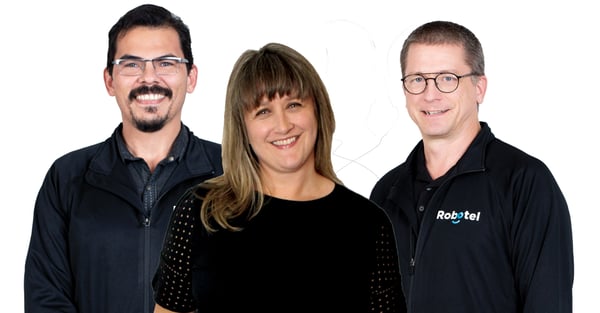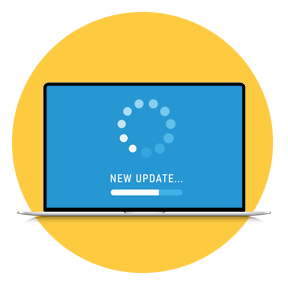Checklist and timeline for successful educational technology projects
Starting an educational technology project is like embarking on a trip around the world that requires meticulous planning and execution across various stages. From the initial research and needs assessment to securing funding, testing various solutions, and ensuring sustainable implementation, the success of an educational initiative hinges on a well-structured approach. The following article serves as a roadmap, guiding project leaders through the intricacies of research, planning, funding acquisition, training, implementation, and long-term sustainability.
1. Research and planning
-
Define project goals and objectives: Clearly articulate the purpose and desired outcomes of the educational project: What are you trying to accomplish? Who will benefit? How and why? Do you want to install a language lab, have a BYOD environment, and/or switch curricula for language teaching?
-
Conduct needs assessment: Identify the target audience (such as world language learners and teachers) and assess the educational needs and gaps that the project aims to address. Talk to your staff, parents, students, and other stakeholders to get a variety of input.
-
Literature review: Review existing research and educational practices relevant to your project. Look at case studies such as this one about doubling student learning outcomes, or explore more topics on our blog!
-
Technology assessment: Evaluate the feasibility and appropriateness of technology tools for the project and make sure you have the necessary infrastructure (strong wifi connections, access points, etc)
2. Project proposal and funding
-
Develop a comprehensive project proposal: Outline project scope, objectives, methodology, and expected outcomes.
-
Budgeting: Estimate costs for resources, technology, personnel, and any other expenses. Talk to our product experts to learn more about all add-ons, options, and potential discounts!
-
Identify potential funding sources: Research and list potential grants, sponsors, or partners.
-
Grant writing: Write a compelling grant proposal with a clear budget, timeline, and measurable outcomes.
3. Project development and demos
-
Pilot projects: Start with a pilot project at one of your schools or within your school to see how it is going with the technology, how students and teachers feel, and to compare results to traditional learning methods.
-
Testing and feedback: Gather feedback from teachers, students, parents, and administrators to refine the project.
-
Demo preparation: Develop a polished demonstration of the project's key features and benefits for other interested staff and schools.

4. Implementation
-
Training for teachers: Develop training programs for educators involved in implementing the project. Should you decide to go with SmartClass, we do offer a self-paced SmartClass Academy so teachers can get used to and learn more about teaching with our solution. On top of that, we offer personalized training and pedagogical mentoring sessions with our educational team to ensure everyone is ready to transform their language teaching.
-
Curriculum integration: Integrate the project into existing curricula, ensuring alignment with educational standards. When you choose SmartClass as your language teaching solution, decide whether you will use our curricula for English, Spanish, German, and Arabic, or create your own activities from existing materials. Best of all: You can combine both options and customize everything to fit your school's needs!
-
Rollout plan: Develop a phased rollout plan to manage the implementation process.
-
Monitoring and evaluation: Implement a system to monitor project progress and evaluate its impact.
5. Outreach and communication
-
Public relations and marketing: Develop a communication strategy to promote the project to the broader school community.
-
Stakeholder engagement: Engage with parents, teachers, administrators, and other stakeholders.
6. Regular updates and maintenance
-
Feedback mechanism: Establish a feedback loop for continuous improvement.
-
Regular updates: Plan for regular updates to content, technology, and pedagogical approaches.
-
Data analysis: Analyze data collected during implementation to inform adjustments. With SmartClass our extensive usage reports for administrators, teachers, and students help gather all important data right from the platform.
-
Documentation: Maintain detailed documentation for future reference and scaling.

7. Sustainability
-
Long-term planning: Develop strategies for sustaining the project beyond the initial implementation phase. Make sure you have a valid SMA (Software Maintenance Agreement) and licensing beyond the first year or two.
-
Professional development: Provide ongoing professional development opportunities for educators. Book yearly refresher sessions with product experts and trainers, or ask for a customized professional development session for your staff.
-
Scale-up strategy: Develop a strategy for scaling the project to reach a broader audience or additional schools and learners.
-
Impact assessment: Assess the long-term impact of the project on students, educators, and the educational community. Make sure to share the results with us (or whichever provider you choose) so that everyone can learn from your projects' success.
While this might seem like a huge timeline, it won't be overwhelming once you have the right people and processes in place. It will definitely be worth the effort when your students are doubling their learning outcomes, your teachers are excited to teach with the new technology, and parents are happy that their children are improving to be more prepared for their future careers in a global world.
And remember, you are not alone in this process. Contact one of our product experts today, and we will be happy to help guide you through each of these steps of your educational technology project!


